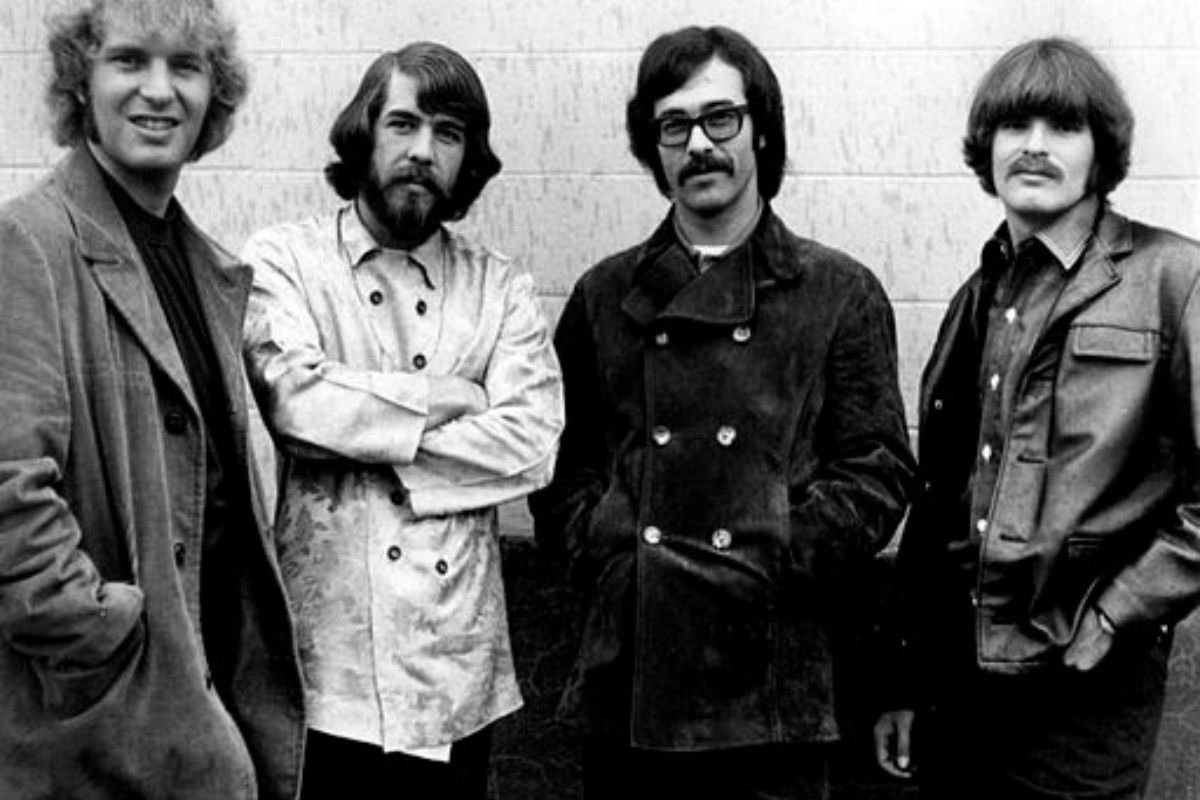One of the most recognizable names in Rock Music, Creedence Clearwater Revival. They sprang from humble beginnings, working the music scene for a decade before finding success.
The Swamps of El Cerrito
In the late 1960s, a rough-and-tumble group of young musicians from the backwater town of El Cerrito, California began channeling the region’s bayou blues through their amps and kick drums.
Little did John Fogerty, his older brother Tom, bassist Stu Cook and drummer Doug Clifford know they were creating the sonic bedrock for one of the greatest American rock bands of all time – Creedence Clearwater Revival.
The Porterville Punks
The seeds were planted in the late 1950s when the Fogerty siblings and friends first formed the Porterville Punks – a scrappy cover band named after their hometown.
Hauling their gear to backyards, school dances and teen clubs across Northern California, they absorbed and blended an eclectic array of influences.
From vintage blues legends like Leadbelly and Howlin’ Wolf to the nascent strains of rockabilly and swamp rock gurgling up from the Louisiana bayous, they showed an early affinity for the raw, organic sounds emanating from America’s fringes.
Musical chops and a reverence for roots music were being forged amidst those gritty early gigs that would soon catapult them to superstardom.
A Bubbling Bayou Sound
After a short-lived stint called The Golliwogs, the quartet found their true calling with the new name Creedence Clearwater Revival in 1967.
The moniker evoked both the pride in their humble roots and a spiritual musical rebirth channeling the country’s distinct regional sounds.
That spirit flowed through their self-titled debut album, which leaned heavily on reinventing beloved American standards and blues classics like “Suzie Q,” “I Put a Spell on You” and “Walk on the Water.”
John’s raspy, distinctive lead vocals blended seamlessly with the twangy jangle of bayou-inspired guitar leads, thunderous swamp-bred rhythms and poetic lyrics evoking an Old West aura.
Though the spark was lit, mainstream success still eluded the fledgling CCR.
Travelin’ Band Success
Their massive commercial breakthrough came via 1969’s “Proud Mary” – its strutting, instantly-iconic groove and Fogerty’s evocative vignettes of life on the Mississippi River proving simply irresistible to the counterculture movement.
Follow-up hits like the atmospheric “Bad Moon Rising,” laidback singalong “Down on the Corner” and their immortal cover of “I Heard It Through the Grapevine” swiftly established the band as the people’s poet-rockers.
Over just four incredibly prolific years between 1968-1972, CCR unleashed seven hugely influential albums of roots-steeped rock that epitomized the era’s back-to-basics simplicity and social consciousness.
Bayou Blues Goes Platinum
1969’s “Green River” and 1970’s “Cosmos Factory” were both multi-platinum smashes, driven by the unrelenting quality and consistency of John Fogerty’s songwriting.
He wove rich, cinematic impressions of America’s swampy backwater fringes, Dust Bowl imagery and countercultural anti-establishment sentiment into one indelible hit after another.
Fogerty’s plaintive, world-weary vocals and economic guitar work conjured entire worlds with each three-minute vignette. Meanwhile, the rest of the band provided an irresistible, in-the-pocket groove that kept audiences electrified.
Their concerts quickly became must-see events, the unvarnished four-piece ensemble pouring sweat and soul into every performance. CCR’s uncompromising work ethic, road dog authenticity and refusal of commercial overindulgence only deepened their mystique.
End of the Revival
Sadly, tension over finances, exhaustion from a relentless touring schedule and internal conflicts led to Creedence’s acrimonious breakup in 1972.
But their legacy proved immense – their raw, elemental style, hypnotic grooves and socially-aware lyrics went on to inspire and influence everything from roots rock, Americana and grunge to Southern rock revivalists.
In many ways, CCR’s distinctly American aesthetic and sound defined the counterculture epoch while transcending it. They condensed the idealism, turbulence and a yearning for simplicity of the late 1960s into an incredible run of artistic statements.
Conclusion: From backwater upstarts to arena-slaying titans, Creedence Clearwater Revival’s improbable journey was the ultimate rags-to-riches tale for one of the most beloved and influential American rock bands.
Their swampy, roots-steeped aesthetic emitted a seductive mystique – a mix of gutbucket grit, wistful Americana and profound articulation of the counterculture’s values.
John Fogerty’s plainspoken yet profound songwriting encapsulating THOSE electric live performances cemented CCR’s iconic status and enduring appeal across generations.
With a catalog of immortal anthems, monsters riffs and that mightiest thicket of coveted rock hair, Creedence’s legacy as swamp-rock royalty only grows richer over time.
Share this tribute to experience the bayou-bred gospel of CCR’s immortal journey once again!
SHARE now with your friends!


